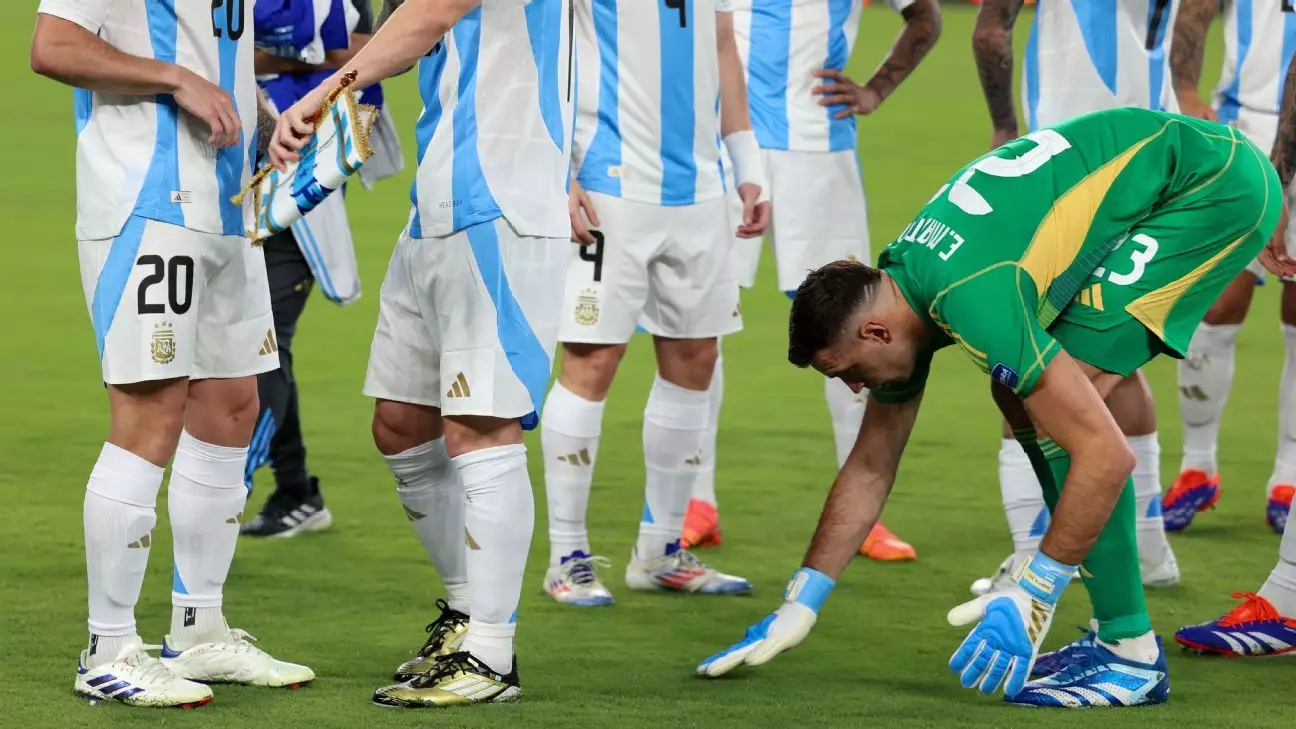The 2024 Copa América kicked off with a celebratory occasion, but quickly turned into a topic of concern due to the conditions of the fields provided by CONMEBOL. The players, including Argentina boss Lionel Scaloni and goalkeeper Emiliano Martínez, expressed frustration and anger over the state of the pitches. The use of artificial turf in some stadiums raised questions about the quality of the venues and the difficulty of using NFL stadiums for soccer.
Various players from different teams participating in the Copa América, such as United States’ Weston McKennie, Peru’s Jorge Fossati, Brazil’s Vinícius Júnior, and Colombia’s James Rodríguez, all voiced their concerns over the field conditions. This widespread criticism highlighted the common issue faced by players across different teams.
CONMEBOL’s decision to opt for field specifications that included both artificial turf and grass fields with specific measurements was met with skepticism and frustration from the players. Improvements were promised, but doubts remained about the quality of the fields for future tournaments.
As the United States gears up to co-host the 2026 World Cup alongside Canada and Mexico, concerns over field conditions persist. Despite promises of better conditions for future tournaments and the implementation of new rules by FIFA, including the installation of temporary natural grass surfaces in stadiums with artificial turf, questions about uniformity and consistency in playing conditions still linger.
FIFA’s goal of creating identical playing surfaces across the 16 host stadiums for the 2026 World Cup presents its own set of challenges. The need for consistency in playability for players, regardless of the climate, type of grass, or stadium infrastructure, will require extensive research and development to achieve the desired outcomes.
The ongoing concerns about field conditions in international soccer tournaments, as highlighted by the issues faced during the 2024 Copa América, point towards the need for better standards, uniformity, and consistency. While efforts are being made to address these issues, the ultimate test will come during the 2026 World Cup, where FIFA’s new regulations will be put to the test. The hope is that these initiatives will lead to improved playing conditions for players and a more enjoyable experience for fans.
